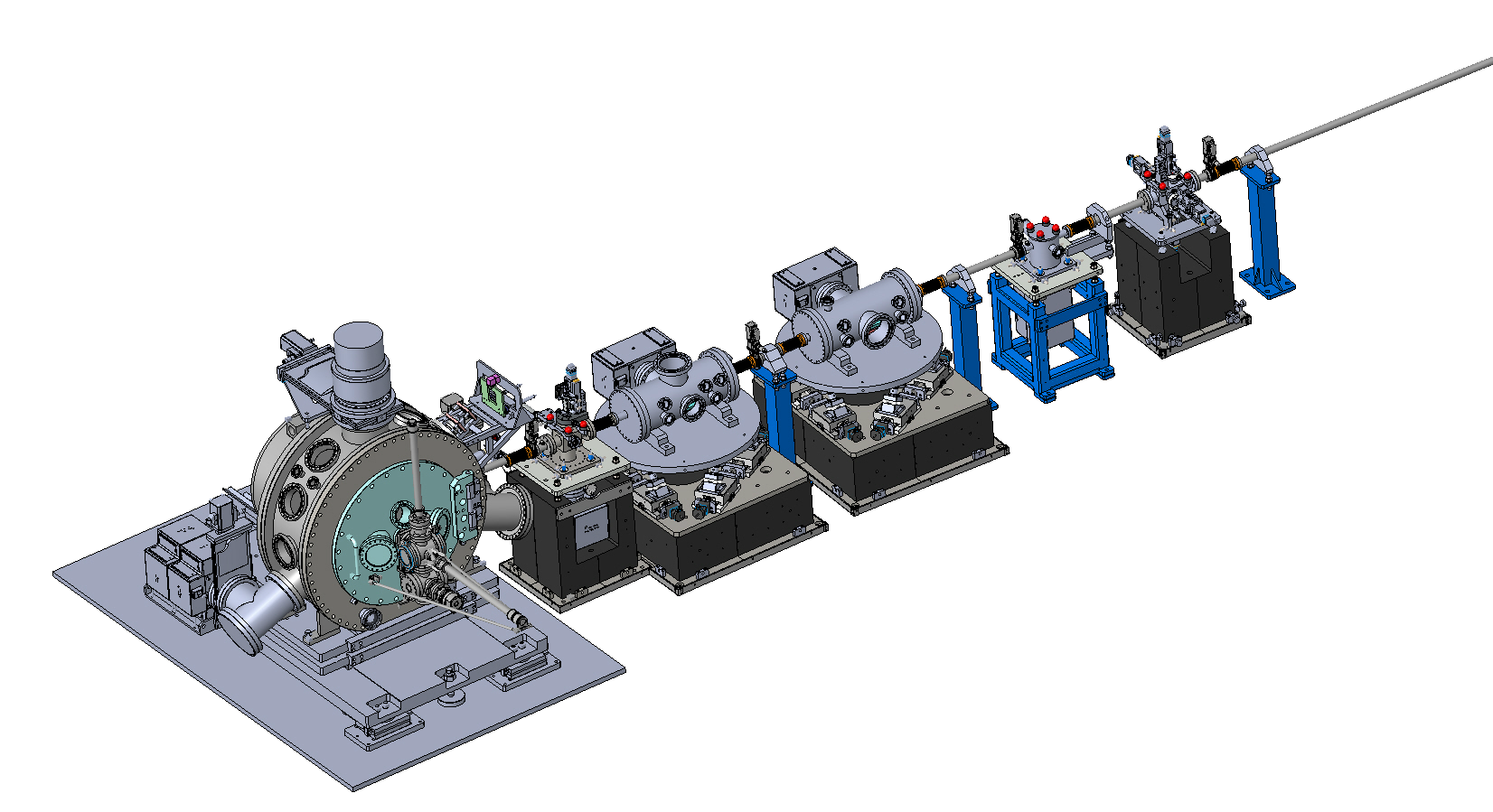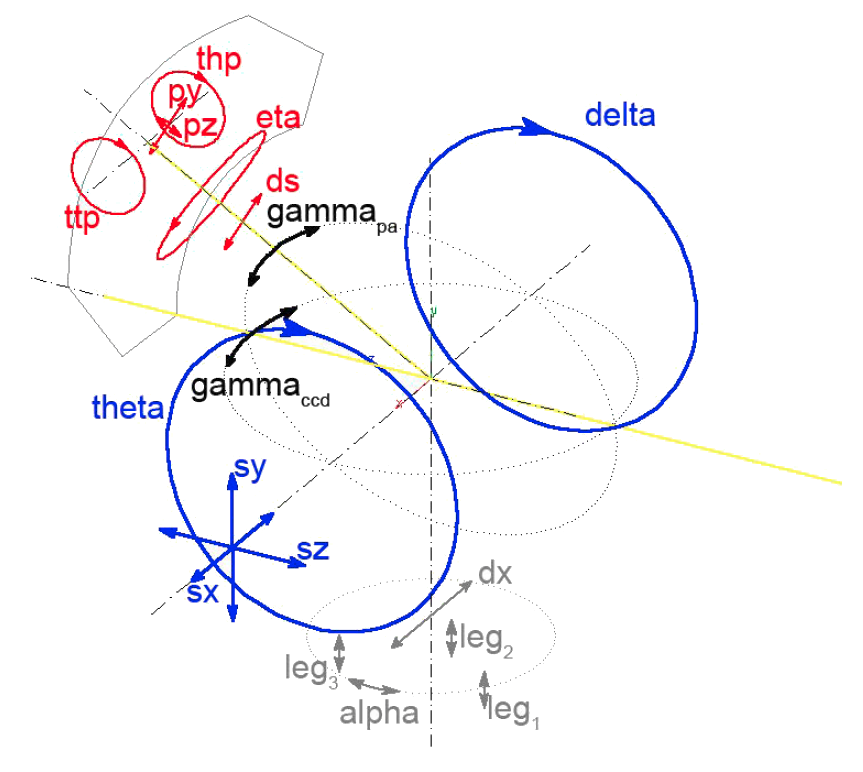
Coherent Scattering Chamber: TACoDE
The coherent soft X-ray scattering chamber is developed through a collaboration between NSRRC and Durhram University, UK, and is called the Taiwan-Anglo Coherent Diffraction Endstation (TACoDE). The endstation is to provide an environment for soft X-ray diffraction, in particular coherent diffraction. Two independent detector systems will be integrated into the diffractometer. The �rst, a 2D area detector (initially a PI-MTE) will enable the study of coherent diffraction. Secondly, a polarization analyzer (PA) stage will measure the polarization state of the diffracted X-ray beam. The conceptual design of this endstation has been made with consideration to the existing RASOR diffractometer (Diamond Light Source), although RASOR was not designed speci�cally for coherent diffraction, we aim to preserve positive aspects of RASOR while avoiding any negative aspects. The following properties are highlighted as necessary for the proposed research to be undertaken.
● Direct provision for cabling and water cooling for future area detectors through vacuum ports on a rotating delta circle
● A cryostat length of no more than 345 mm (to achieve stability requirements and minimize thermal expansion), and sufficient space for a cryostat of diameter 60 mm
● Access through a removable (without mechanical assistance) flange on the front of the diffractometer
The end-station comprises of an in-vacuum (UHV) diffractometer based on six circle geometry with two principle rotations, 𝛿 (detector) and θ (sample).The diffractometer will have two detector systems; an area detector and a polarization analyzer. These will each be mounted on independent out-of-plane γ rotations. The provision of rotations removes the need for a γ rotation of the sample position, enabling a dramatic reduction in the size of the sample translations, and in turn a reduction in the length of the cryostat from RASOR. Figure below explains the de�nition of these motions. The majority of the back ange of the vacuum chamber will form the 𝛿 rotation with the θ rotation mounted upon this. This means that the 𝛿 and θ rotations are not independent and working in air environment, in order to maintain a �fixed θ position when moving 𝛿, θ must be driven in the opposite direction at an equal speed. The reasoning of a large 𝛿 rotation allows the cabling for the detectors and polarization stage to be routed directly out of ports minimizes in-vacuum cable management. It more importantly allows water cooling through a port for the 2D detector. This functionality is essential for future-proo�ng the installation of area detectors in development, the requirements of which are as yet unknown. In order to achieve a high reliability and lifespan, both the θ and 𝛿 rotation circles run in air with double pumped vacuum feedthroughs.

Schematic of the motions with mnemonics of diffractometer system. In-vacuum motions are shown in red and black, and table motions in grey. Dash-dot lines show rotation axes, and dotted lines indicate arc circles.